The two-wheeler market has witnessed so much action in the battery-electric category, that it may be easy to forget that the entry commuter 100-110cc petrol motorcycle segment still constitutes nearly one-third of all motorcycle sales. These are the wheels on which India moves, and even as the market for entry commuters matures, it will be decades before it starts becoming less important. This is also a market that has been dominated by Hero since the beginning of the four-stroke era, and particularly by the Splendor. That is one bike which has pretty much been singularly responsible for making Hero the biggest motorcycle manufacturer in the world.
After waiting in the wings for about two decades, Honda Motorcycle and Scooter India has finally entered the commuter segment with its own 100cc bike. Can the new Shine 100 be the game changer that Honda needs? Does it have what it takes for the Japanese brand to woo buyers away from its erstwhile partner? Honda officials say that the company has tried to ensure that the new motorcycle gets the full newbie treatment, and so everything from the chassis to the fuel-injected engine to all the cycle parts are brand new.
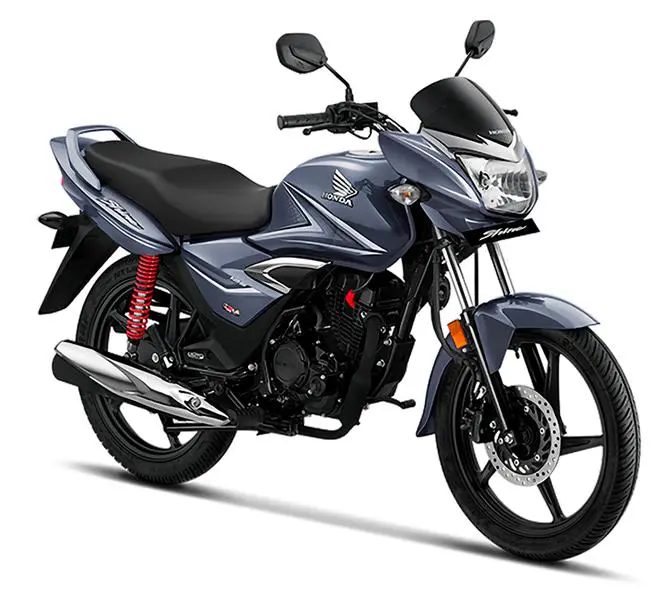
Design
Honda is also staying on with its conservative, yet smart strategy, choosing a tried and tested brand within its portfolio in the Shine 125 and loading its new 100cc bike with the same popular characteristics of the former. Maybe that is a fair strategy given the Shine 125’s brand recall and the fact that it is a market leader in the executive motorcycle segment. So, when I kitted up and walk towards the new Shine 100 during the test ride last week, it was not just the name and logo that was similar, but also the overall design of the smaller displacement sibling. The headlamp configuration, the tinted bikini-fairing, the overall shape of the tank and some of the other parts are all inspired by the design of the Shine 125. The peeled back pentagonal headlamp houses halogen bulbs, and the turn indicator pods are large and light up bright for better visibility.
The colour theme for the new Shine 100 involves a base black paint with a range of contrasting dual colours for the graphics and stickers. These are again very much like the Shine 125 and focused around the 9-litre fuel tank and the side panels. In keeping with the theme, the 17-inch alloy wheels are coated black, as is the silencer and tubular steel handlebar. The Shine 100’s seat is a mildly contoured single unit. Without mentioning that they endorse more than two passengers on the bike, company officials said that the 677mm long seat has been constructed for comfortable riding even for pillion riders who sit sideways, and that the seat edge merges neatly on to the fuel tank’s design to allow “multiple passengers” to be seated easily. The seat height is also a relatively low 786mm making it easy even for riders with average build to be seated comfortably.
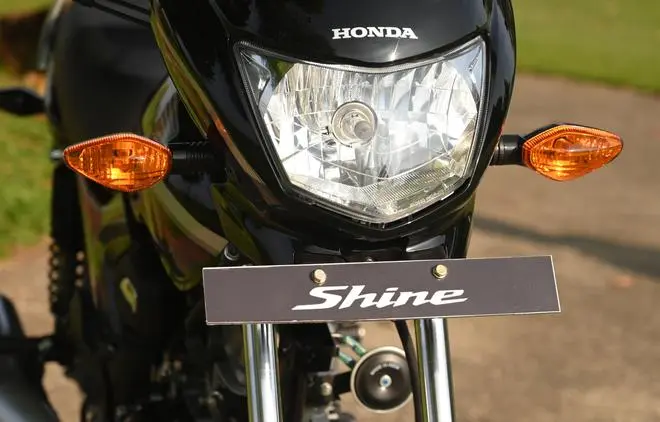
At the rear, the tail-lamp is again like in the Shine 125, and there is a cast aluminium grab handle too. Many elements in the Shine 100 seem a shade oversized, and yet manage to come together quite nicely. The matt-black silencer also gets a neat chrome protector, adding an element of premiumness to the bike. Currently, the Shine 100 is being offered only in one trim variant.
Also read
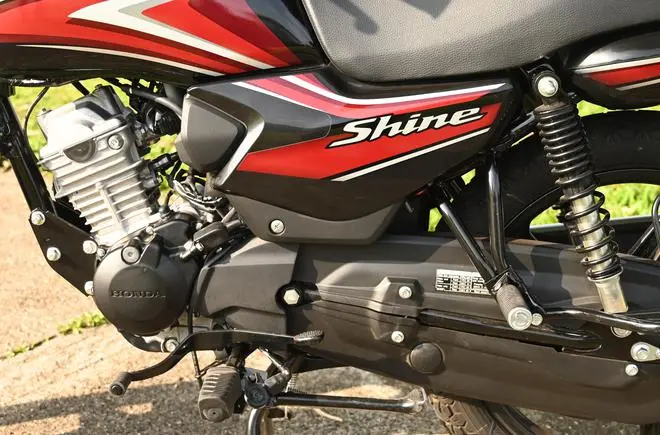
Build and Features
There have been competing motorcycle brands that have said that it is an engineering challenge to include both self-start and kick in fuel-injected motorcycle engines. But the new Shine 100 gets both. Honda has had fuel-injection in its other small displacement engines, so integrating it into this brand new 98.98cc engine wouldn’t have been a challenge. The engine sits at the bottom of a tubular, diamond frame. The light chassis is complemented by a tubular swing arm. The construction gives the Shine 100 a kerb weight of just 99kgs. Suspension duty is performed by telescopic forks at the front and conventional dual shock absorbers at the rear. For braking performance, it gets drum brakes for both the front and rear.
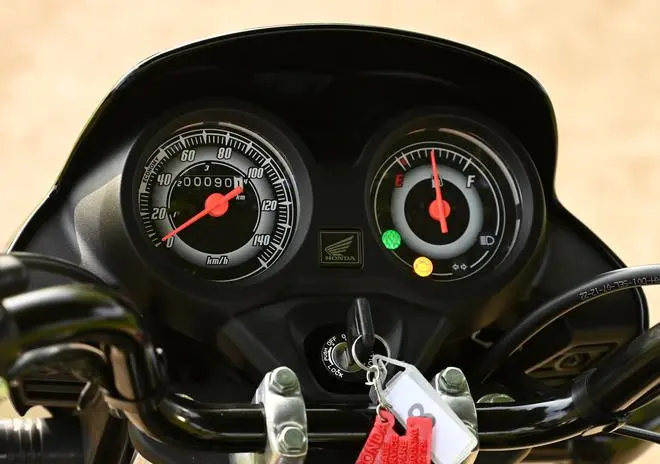
The large headlamp with integrated bikini-fairing, the side panels and chunky mudguards give the Shine 100 a stance that is larger than its segment positioning, without making it seem awkward. It is also very clear even as I swing my leg over that the Shine 100’s ground clearance is good; it is 168mm and works well for a motorcycle with a wheelbase of 1,245mm. The twin-pod instrument cluster features analog dials, with a speedometer on the left pod and a large fuel gauge and neutral/ turn indicator/ OBD2 indicators in the other one. Switchgear is the basic set including controls for high beam, horn, turn indicator and self-start.
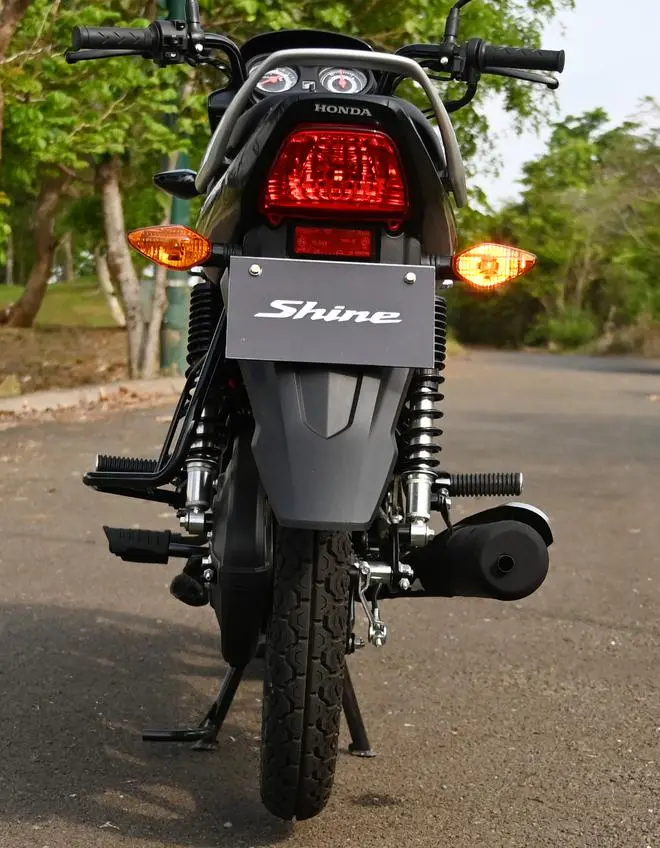
Engine and performance
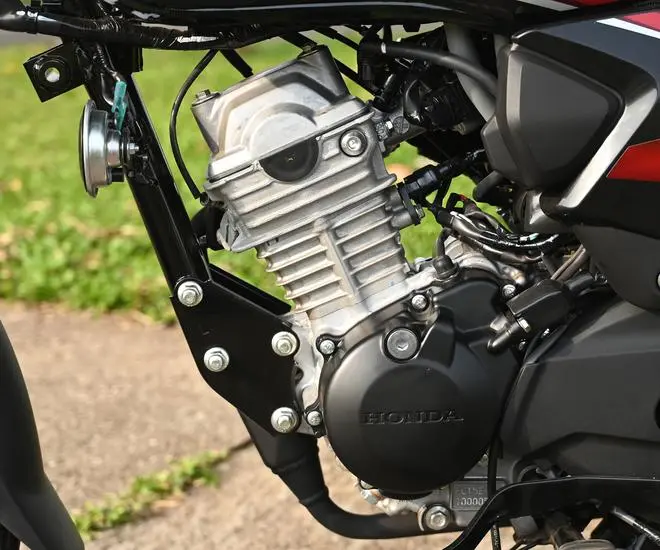
Honda says that during the development of the new 100cc engine the focus was on efficiency and long-term reliability. In fact, the company claims that there are as many as 12 patents that have been awarded exclusively just for this new fuel-injected engine. One of the focus areas has been friction reduction and Honda engineers have used some interesting techniques to achieve this. There are no special coatings for the piston, instead they have used techniques like a piston cooling jet which sprays engine oil directly on the piston and sleeve, which helps in both lubrication and heat absorption. This lowers the temperature and allows improved combustion. The engine also features an offset cylinder - basically the cylinder is positioned just a little past the centre line of the crank, so that at the point of full stroke there are no combustion losses and there is lesser friction. Another efficiency focused addition is the roller rocker arm. It also employs a solenoid valve for behaving like an auto choke for the PGM-FI (fuel-injection) system, to ensure one press/ kick start.
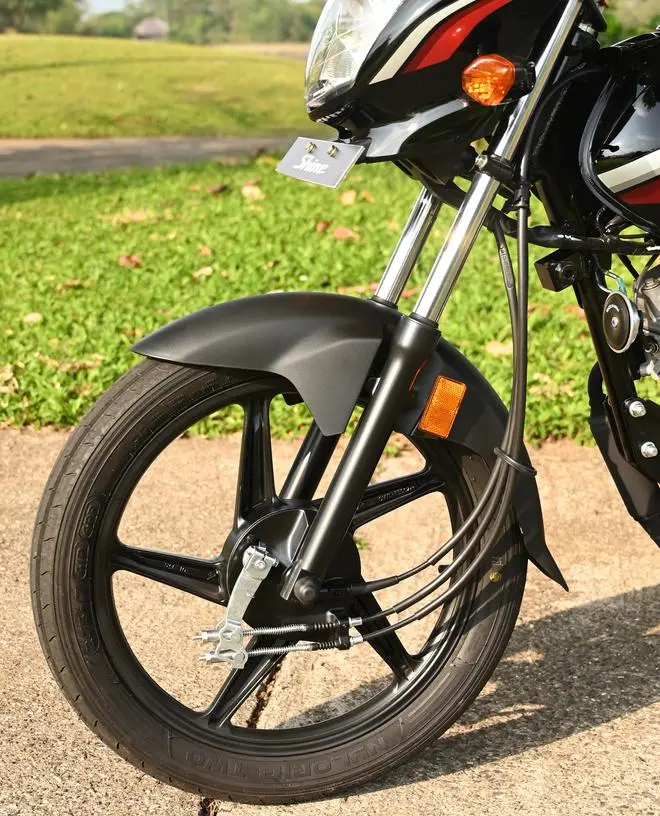
The 98.98cc, 4-stroke engine generates about 7.4hp of peak power and 8.05Nm of peak torque. The output is sent to the rear wheel using a 4-speed gearbox that is engaged using a multiplate wet clutch. This gearbox configuration is all up to the fourth slot, and the heel-and-toe shifter and an easy to engage clutch make it convenient to use even during riding conditions where frequent shifts may be needed. The motor is refined and is well matched with the Shine 100’s overall target customer profile and positioning. In gear, the Shine 100 pulls away easy and sounds refined, though with a pillion and on a steep incline it does sound laboured and needs a quick shift down to a lower gear. One regular tarmac, there is enough torque for it to keep chugging along even in third or fourth gear at speeds that may lead to knocking in some of the of the competitors. In terms of speeds at which the rider will feel most comfortable, that will have to be between 50-60 kmph. Vibrations at the footpeg and handlebar can get a bit too strong once you go past 60-65kmph.

The motor’s frugal performance and gearbox ratios do point to a very efficiency focused setting, but Honda officials didn’t reveal the ARAI-rated mileage number, though it has officially been confirmed. During the ride there was no option to put the Shine 100 through a fuel-efficiency test.

Bottom Line
The new Shine 100’s engine is fuel-injected and on average there should be fewer parts that need frequent servicing. Honda is also placing its bets with the long-term reliability of the new bike, and to that end the Shine branding is expected to communicate the message. It still has features like the external fuel-pump that is located outside the tank for easy servicing. And it also addresses another common problem by adding a side-stand sensor and engine cut-off feature. The Shine 100’s motor can handle E20 (ethanol-doped) petrol and it is OBD2 compliant, which means that the ECU is doing real-time ‘on-board diagnostics’ and monitoring. On the whole, it also ticks off all the regulations related check boxes.
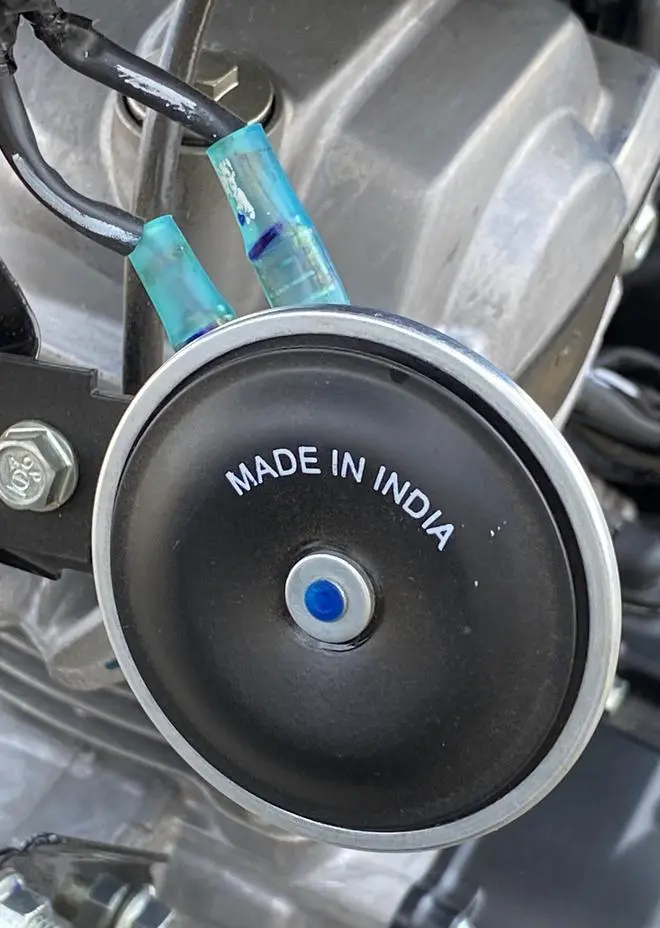
Honda is clear about its target audience for the Shine 100. And a lot of the buyers are expected to come from semi-urban and rural centres. It is a smart move then to give the Shine 100 an aura of premiumness within its segment, while still retaining its focus on practicality. With an aggressive price positioning starting at ₹64,900 (ex-showroom), the Shine 100 manages to undercut most of the competitors in this sensitive entry commuter segment. Honda is also a patient, silent market player, so it may well have a few more surprises up its sleeve.
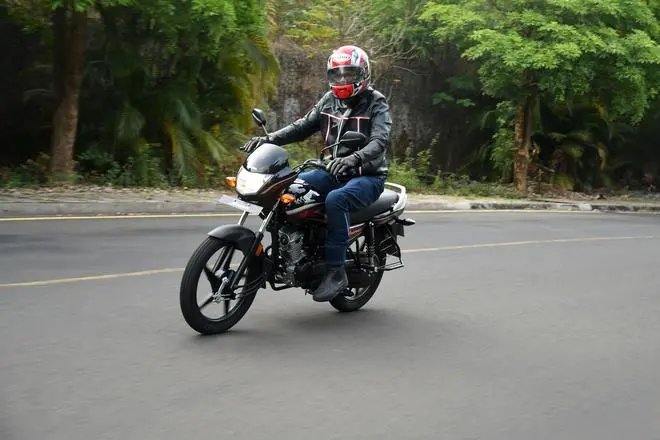






Comments
Comments have to be in English, and in full sentences. They cannot be abusive or personal. Please abide by our community guidelines for posting your comments.
We have migrated to a new commenting platform. If you are already a registered user of TheHindu Businessline and logged in, you may continue to engage with our articles. If you do not have an account please register and login to post comments. Users can access their older comments by logging into their accounts on Vuukle.